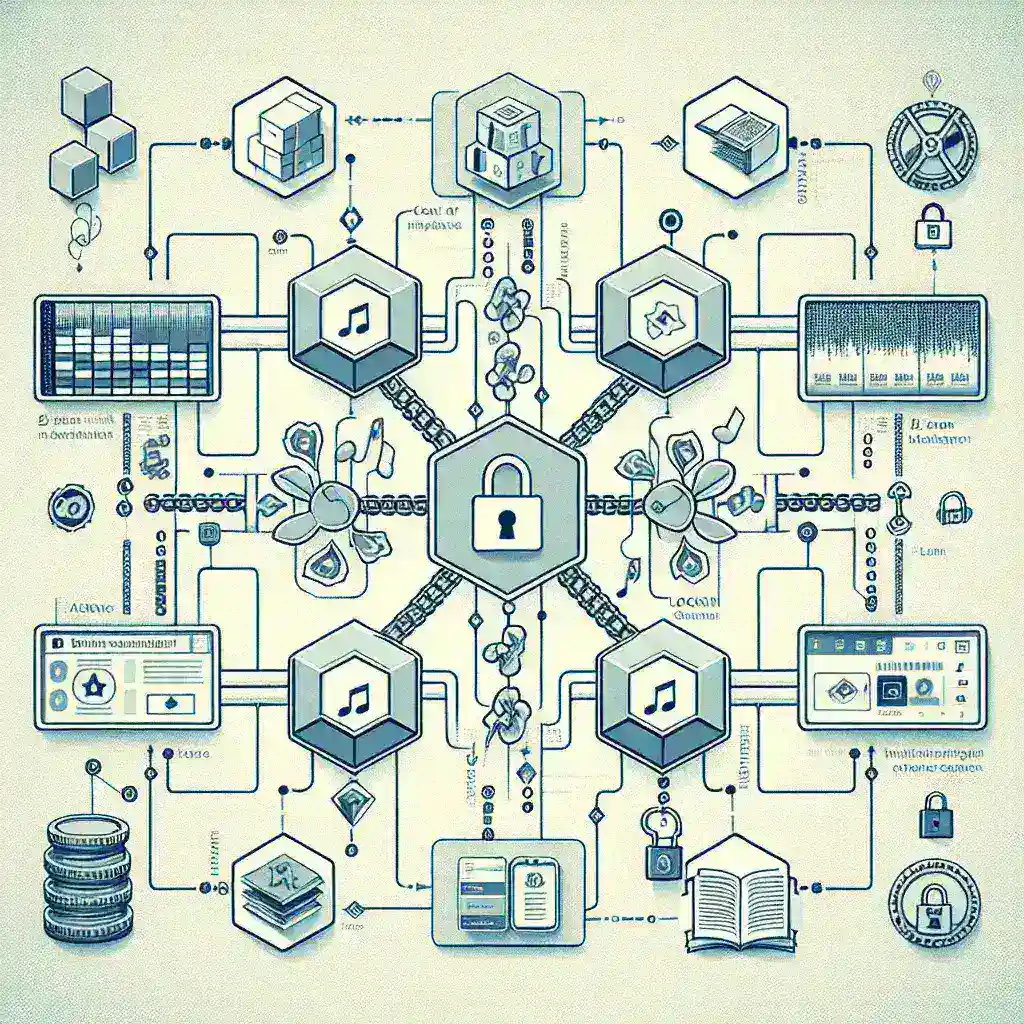The Evolution of Digital Rights Management and Blockchain Integration
In today’s rapidly evolving digital landscape, the intersection of blockchain technology and digital rights management (DRM) represents a groundbreaking shift in how we protect and manage digital content. This comprehensive exploration delves into how blockchain is revolutionizing traditional DRM systems, offering unprecedented solutions to long-standing challenges in content protection and rights management.
Understanding Blockchain’s Impact on Digital Rights Management
Blockchain technology has emerged as a game-changing force in the digital rights management sphere, introducing innovative ways to track, manage, and protect digital assets. Its decentralized nature and immutable ledger system provide a robust foundation for securing intellectual property rights and ensuring fair compensation for content creators.
Key Benefits of Blockchain-Based DRM Solutions
- Enhanced Security: Blockchain’s cryptographic features provide unprecedented protection against unauthorized access and content manipulation
- Transparent Tracking: Real-time monitoring of content usage and distribution through immutable records
- Automated Compliance: Smart contracts ensure automatic enforcement of licensing terms and usage rights
- Efficient Revenue Distribution: Direct and transparent payment systems for content creators and rights holders
Transforming Content Creation and Distribution
The integration of blockchain technology in DRM systems has fundamentally altered how digital content is created, distributed, and monetized. This transformation benefits all stakeholders in the digital content ecosystem, from individual creators to large media organizations.
Impact on Content Creators
- Direct Control: Artists and creators maintain greater control over their intellectual property
- Fair Compensation: Transparent payment systems ensure creators receive appropriate compensation for their work
- Usage Tracking: Detailed insights into how and where their content is being used
Smart Contracts and Rights Management
Smart contracts play a pivotal role in blockchain-based DRM systems, automating and enforcing rights management processes with unprecedented efficiency and reliability. These self-executing contracts eliminate intermediaries and reduce administrative overhead while ensuring compliance with licensing terms.
Key Features of Smart Contracts in DRM
- Automated Licensing: Instant processing of content licenses and permissions
- Usage Monitoring: Real-time tracking of content consumption and distribution
- Revenue Distribution: Automatic payment processing based on predetermined terms
- Access Control: Dynamic management of user permissions and content access
Enhanced Security and Anti-Piracy Measures
Blockchain technology provides robust security features that significantly enhance content protection and combat digital piracy. The decentralized nature of blockchain makes it extremely difficult for bad actors to manipulate or illegally distribute protected content.
Security Advantages
- Immutable Records: Permanent and unalterable documentation of content ownership and rights
- Encrypted Distribution: Secure content delivery through encrypted channels
- Authentication Mechanisms: Advanced user verification and access control systems
Revolutionizing Content Monetization
Blockchain-based DRM systems are introducing innovative monetization models that benefit both content creators and consumers. These new models enable more flexible and efficient ways to generate revenue from digital content.
New Monetization Opportunities
- Micropayments: Enabling small-scale transactions for content consumption
- Subscription Models: Enhanced subscription services with transparent usage tracking
- Revenue Sharing: Automated distribution of earnings among multiple stakeholders
Future Implications and Industry Adoption
The adoption of blockchain technology in DRM systems continues to grow, with significant implications for various industries. From music and video streaming to digital publishing and gaming, blockchain-based DRM solutions are becoming increasingly prevalent.
Industry Applications
- Entertainment Industry: Enhanced protection for music, movies, and games
- Publishing Sector: Improved management of digital publications and e-books
- Software Distribution: Better control over software licensing and distribution
Challenges and Considerations
While blockchain technology offers numerous advantages for DRM, there are several challenges that need to be addressed for widespread adoption:
- Scalability: Managing large-scale content distribution effectively
- Integration: Compatibility with existing DRM systems and infrastructure
- User Experience: Maintaining seamless access while ensuring security
- Regulatory Compliance: Adhering to evolving digital rights regulations
Conclusion
Blockchain technology is fundamentally transforming digital rights management, offering innovative solutions to long-standing challenges in content protection and distribution. As the technology continues to evolve and mature, we can expect to see even more revolutionary applications in the DRM space, ultimately creating a more secure, transparent, and efficient digital content ecosystem for all stakeholders involved.

